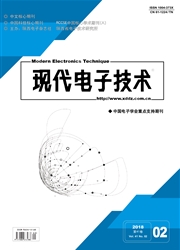

 中文摘要:
中文摘要:
压缩感知(CS)理论作用在稀疏信号或可压缩信号,用很小的采样速率,保证信号采样与压缩同时进行,并可以精确恢复原始信号。文中侧重CS重构算法中经典的贪婪算法研究,介绍了四种经典的贪婪算法:正交匹配(OMP)算法、正则化正交匹配(ROMP)算法、压缩采样匹配追踪(CoSaMP)算法和分段正交匹配追踪(StOMP)算法。从重构精度和重构耗时两个方面,结合横向和纵向详细的比较,详尽地给出了不同算法的区别以及优缺点。在StOMP算法增加考虑稀疏度和观测矩阵行列关系的可调节因子,提出了一种改进算法—分段可调节OMP重构(StrOMP)算法。通过仿真实验发现,提出的改进算法既提高了图像重构精度,又保证了其重构时间短的优越性。
 英文摘要:
英文摘要:
Compressed Sensing (CS) theory uses small frequency, which is mainly for sparse or compressible signal. Sampling and compressing are also implemented successfully at the same time, and can accurately recover the original signal. It focuses on the classical greedy algodthm in this paper for compressed sensing reconstruction algorithm, including four classical matching pursuit algorithms like Orthogonal Matching Pursuit (OMP) ,the Regularized Orthogonal Matching Pursuit (ROMP) ,Compressive Sampling Matching Pursuit (CoSaMP) and Staguwise Orthogonal Matching Pursuit (STOMP). Considering the reconstruction accuracy and time as evaluation stand- ards, the advantages and disadvantages of algorithms and difference of them are given by combining with horizontal and vertical comparison. The adjustment factor for STOMP at each iteration is put considering the sparsity and the observation matrix ranks,and an improved algorithm is proposed, which makes innovations for StrOMP algorithm, named Stagewise regulation Orthogonal Matching Pursuit ( StrOMP). The simulation shows the proposed algorithm can raise the accuracy of image reconstruction, and guarantee the priority of the reconstruction time of the new algorithm.
 同期刊论文项目
同期刊论文项目
 同项目期刊论文
同项目期刊论文
 期刊信息
期刊信息
